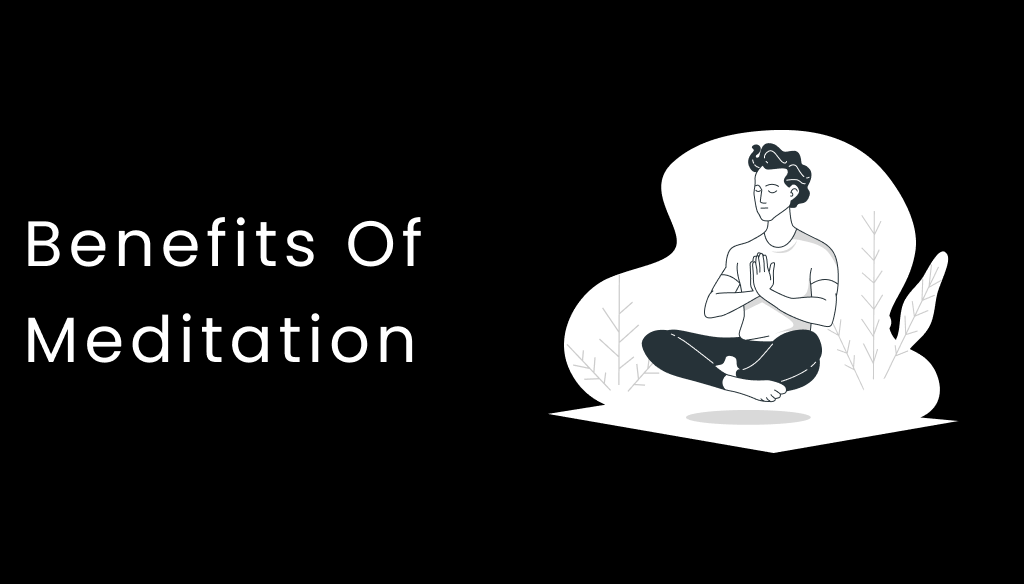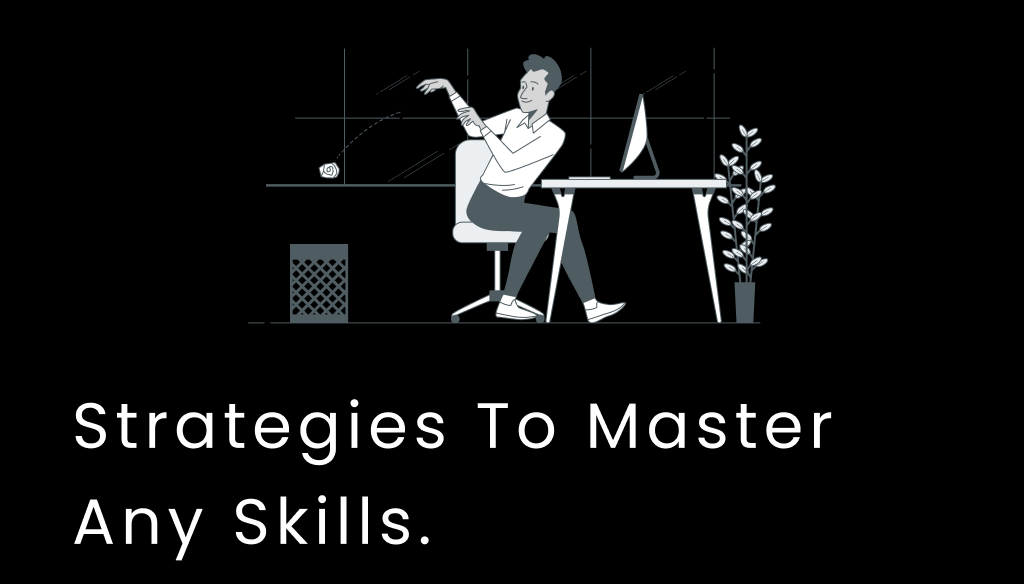Types and Benefits of Meditation
If you don't know what the heck is meditation then you came into the right place. In this article, you will learn everything you need to know about mediation. so let's dive right into it. Meditation is a practice where one trains the mind and induces

If you don't know what the heck is meditation then you came into the right place. In this article, you will learn everything you need to know about mediation. so let's dive right into it.
Meditation is a practice where one trains the mind and induces a state of consciousness, either to realize some benefit or as an end in itself. The term meditation carries different meanings in different contexts.
Meditation has been practiced since antiquity as a component of numerous religious traditions and beliefs. It involves techniques such as breathwork, mindfulness, creative visualization, yoga, etc.
Studies have shown that meditation can have many benefits for our physical health. It can lower blood pressure, reduce the risk of cardiovascular disease, and help with anxiety. Meditation can also help us to sleep better at night. Meditation also has mental benefits such as increased productivity and reduced stress levels.
The purpose of meditation is to become good in life, reduce stress, and increase awareness. There are lots of companies that offer meditation, yoga, and other mindful practices to their employees.
In various interviews, successful people said that they practiced meditation every day.
Meditation helps us to understand the universal language of love. It is said that love is understood by every living organism and meditation helps to understand people and increases love towards people.
History of meditation
Meditation is used in different cultures as a spiritual practice. The Upanishads of Hindu philosophy include the first records of meditation (dhyana), and meditation is an important part of Buddhism and Hinduism.
Asian meditative techniques have expanded to Western countries since the 19th century, where they have found use in non-spiritual contexts.
Jainism, Hinduism, and Buddhism practice different techniques of meditation such as yoga, mantra meditation, vipassana, and lots of others practices.
Meditation has been around for a long time. Its origins date back to ancient India and China. The earliest references to meditation are found in the Hindu Vedas from India, dating back to 1500 BC.
The Rigveda describes meditation as "being still" or "reflecting upon oneself". It is described as a state that results from refraining from activities such as thinking, speaking, or doing anything else that might disturb one's concentration. Other forms of meditation were developed based on Buddhism techniques which originated in India around 500 BC.
One of the popular records is from Bhagwat Geeta when the Hindu mythological character Krishna was giving a motivational speech to arjuna during the time of war.
Another popular record is Marcus Aurelius' journal or book on meditation.
It is said that Buddhism originated from Hinduism and shares some Hindu culture and practices. Buddhist meditation practice is mainly inspired by Hindu scripture and saying. It involves practices like vipassana and Bhavana dhyana. Silk road helped Buddhism meditation to travel across other east Asia countries like china, japan, Korea, Singapore, etc. in the present time Buddhist meditation is the most popular meditation practice. Buddhist meditation practice has been mainly used for uplifting from worldly benefits.
Most western meditation practices were introduced in Asia as a method for happiness and better performance. Other Asian and African cultures practice meditation every day, they believe meditation connects them with universal knowledge.
Types of meditation
On the basis of type of practice, meditation has lots of types and branches. In different regions or cultures, people have different ways of practicing meditation. Some of the types of meditation practices are explained here in this article.
Zen meditation
Zen meditation is an ancient Buddhist way of meditation and it is rooted in Buddhist principles and philosophy. Zen meditation involves the process of activity where the practitioner observes external and internal activities around him/her. Zen meditation can be traced to India but it was formalized in china.
Zen meditation promotes simplicity and the natural world. Zen posture and breadth works increase alpha waves in the brain which helps to think better and calm out unnecessary thoughts.
Sitting still and focusing on breadth work are the most basic principles of zen meditation. Zen meditation is actually sitting meditation and sitting posture matters a lot in zen meditation. Different types of posture are followed by various practitioners. The prime goal of zen meditation is sitting still and remaining in the present state.
How to do zen meditation
There are lots of guides on how to practice zen meditation and I will show the most simple and effective guide.
- Sit in zen posture either in lotus, half-lotus, Burmese, stool, seize, or on a chair. Sit comfortably and don't be relaxed; it makes you fall asleep.
- Close your eyes or slightly close them.
- Take a long breath and focus on that breadth. Take a breath from your nose.
- What to do with thought? Don't do anything, just observe the thought and your body.
- Keep breathing and observing your breath and thoughts.
- There is no fixed time, so you can come out of meditation whenever you like.
Mantra meditation
Mantra meditation is a process of repeating mantras in your head or pronouncing them aloud. Mantras are certain words or phrases which help to focus in the meditation process. Why do mantras matter in meditation? Well, mantras are sound and sound has tremendous benefits on our body.
Our body is a part of the universe and the root of the universe is made up of energy, frequency, and vibration. If we can introduce the right amount of vibration with the right frequency to our body then our mind can produce unimaginable results. There are lots of sources proving the benefits of mantras.
Mantra replaces your thoughts with other peaceful and beneficial thoughts. The main goal of practicing mantra meditation is to feel the vibration of sound and focus on your intention. ‘Om’ mantra is the universal and most powerful mantra. This type of meditation is mainly practiced by Hindu or Buddhist priests or monks.
A mantra replaces 10,000 different thoughts with one thought – a thought that gives peace and awareness. It allows you to collect your scattered attention, which is spread thin all over the place, and unify it, thus empowering it.
How to practice mantra meditation
- Find appropriate mantras to follow.
- Set intention why you want to practice mantra meditation
- Find a comfortable place to practice
- Seat comfortably and focus on your breath
- Chant your chosen mantras
- Practice as long as you want to
Transcendental meditation
Transcendental meditation is also a form of silent mantra meditation. In the mid-1950s, Maharishi Mahesh Yogi developed the technique in India.
Transcendental meditation practitioners may notice a reduction in tension and anxiety within minutes. Long-term practice of mindfulness meditation, like other forms of meditation, can lead to even more favorable outcomes, such as increased stress resilience, reduced general anxiety, and increased life satisfaction.
So, what makes transcendental meditation unique? In essence, there is one major distinction between TM and other meditation techniques: most meditation seeks to control or train the mind through thought. Transcendence, on the other hand, necessitates no focus, control, or training.
Dozens of research have been conducted on the advantages of Transcendental Meditation, which include less stress and anxiety, increased brain activity, and better cardiovascular health.
Transcendental meditation can be practiced anywhere but the first step begins with finding a certified instructor. A practitioner must be introduced by a teacher before practicing Transcendental Meditation.
This includes structured instruction sessions followed by a brief ceremony in which the person is given a mantra chosen by the teacher based on their personality and profession. Three "checking" sessions follow, during which the participant meditates under the teacher's supervision.
The person then begins practicing on their own for 20 minutes twice a day and continues to do so indefinitely.
Yoga meditation
Yoga meditation is a type of moving meditation. It involves slow physical movement of creating different body postures and controlling your breath. It is an ancient form of meditation mentioned in Hindu scripture like rig Veda.
With the advancement over time yoga meditation has lots of branches and practice techniques. Yoga's broader philosophy is about linking the mind, body, and soul.
Yoga is divided into six sub-branches. Each branch represents a distinct perspective and characteristic. The advantages of regular yoga practice are numerous. A thorough yoga practice can help maintain the health of your back and joints, improve your overall posture, stretch and strengthen muscles, and strengthen your balance. Different types of yoga poses give you a different perspective about your body.
The benefits of yoga meditation are:
- Improves balance: regular yoga practice helps to improve your balance. Due to long office sessions, people feel like losing their balance so practicing yoga in the morning can be a nice investment of your time.
- Reduce stress: students, office workers, and the whole working community feel stress about their work, their relationships, etc. If you are a student taking a medical course, business course, or any type of course if you feel stressed it can be a pain in the ass. So to reduce stress you can practice yoga meditation or any form of meditation in the morning or evening.
- Cure depression
- Strengthen bone and whole immunity system
- Helps to reduce body pain: yoga meditation helps to reduce body pain especially back and knee problems.
Vipassana meditation
Vipassana is an old practice of mindfulness meditation. It includes watching, without criticizing or concentrating on, your feelings and thoughts as they are. It is said that this form of meditation is practiced by Buddha himself.
The prime goal of vipassana meditation is to accept thoughts, feelings, and experiences for what they truly are by quieting your mind and focusing on the moment. Eliminate regrets by focusing less on the past and less on tomorrow. Respond to situations based on facts rather than fears or previous beliefs.
Benefits of vipassana meditation
- Improves mental activities: meditation like vipassana helps you to improve mental activities. Vipassana meditation helps your body to make more oxygen flow to the brain and keep brain activities intact.
- Promotes brain health: practicing vipassana meditation helps you to improve your brain health. Regular practice of vipassana helps our body to pump more blood and oxygen to the brain. If our brain gets more oxygen and blood our thought process will be fast and our quality of thought also increases.
- Helps to reduce stress and anxiety: vipassana meditation helps to reduce stress and anxiety in long-term practice. Let me make clear one thing. You cannot eliminate stress from your system in one practice of vipassana it takes time.
- Improves concentration
- Helps to live in the present state
Chakra meditation
According to Ayurveda, our body has seven energy centers each with a different function. In a simple definition, chakra meditation is a form of meditation practice that involves breathwork, mindfulness, yoga practice, and chanting mantras to maintain energy in different centers. Chakra meditation is not often practiced it is practiced to solve specific problems that arise in the body. Often before practicing this type of meditation chakra test is necessary.
Seven energy chakras
- Crown chakras (Sahasrara): it is located at top of our head and it helps to cultivate self-mastery
- Third eye chakra(Ajna): it is located at the forehead and helps us to know ourself
- Throat Chakra (vishuddha): it is located at the base of our throat
- Heart Chakra (Anahata): it is located at the center of the chest and it helps to find true unconditional love.
- Solar plexus chakra (Manipura): it is located at the belly button and helps us to build confidence.
- Sacral chakra (Savadhisthana): it is located at the pelvis and helps us to regulate our emotions and desires.
- Root chakra (Muladhara): it is located at the base of the spine and helps to maintain inner stability.
Chakra meditation is any style of meditation that aims to clear trapped chakras and tap into the power of the body's natural energy centers. They can be used for anything from fostering peace and relaxation to stimulating spiritual awakening (however spiritual enlightenment meditations should be taught by a licensed instructor rather than a YouTube video).
A self-monitored exercise should serve if your aim is to feel more regulated or calm or even merely to fall asleep more easily. If you want to go beyond, it's recommended to learn from the experts.
Sound meditation
In sound meditation, a meditation practitioner uses a certain frequency of sound to enter into the different stages of the brain. Our brain wave has four-stage, each is the result of our thought and working condition.
The practitioner uses a singing bowl or tuning fork of a certain frequency to practice meditation. These external sound frequency waves can lead to changes in the different stages of the brain.
Till now we learned about the history of meditation and the types of meditation now let's learn about the benefits of regular meditation. Meditation has lots of benefits, and some of them I try to explain here.
Benefits of meditation
You will have the power to deal with stress
It is shown from scientific research that regular meditation practice can lower the level of cortisol in our bodies. Cortisol is the hormone that is responsible for stress-related activities of our brain.
It eases anxiety
Meditation practice can ultimately be helpful for our brain to shut down the activities that are responsible for anxiety.
It helps to fight depression
Depression is a series of mental illnesses caused mainly due to stress and anxiety. Regular meditation practice helps to cure stress and anxiety and ultimately depression. Meditation helps to slow down the thought process or process of production of a hormone that causes stress and anxiety.
Meditation helps heart
Some scientific research shows that regular practice of meditation, any type of meditation, can reduce the chance of any type of cardiovascular disease.
Meditation naturally helps to cure high blood pressure. A study of nearly 1000 participants shows that meditation actually helps to cure high blood pressure.
Meditation practice enhances your self-image and your capability to understand yourself and other people. When you can understand others' thought systems you can be aware of potential emotional thoughts that might ruin your relationship.
Increases attention span
Regular meditation practice is like a workout for the attention span of our brain.
Different studies show that people who practice meditation have more attention span than those who don't.
Improves memory
When you have increased your attention span your brain is like the brain of a young child. There are lots of factors behind the memory of a person but meditation is a tool that helps to improve memory capability and treat illnesses that is related to memory.
Helps to fight addiction
The mental discipline developed from meditation practice helps you to control the craving for addictive behaviors.
A study shows that meditation lowers the stress level in the brain which activates addictive behavior like smoking, and alcohol, and ultimately treats the addiction.
Helps to improve sleep
Quality of sleep is directly related to stress and anxiety. Various types of meditation practice help to shift the thoughts that are responsible for insomnia. This shift of thought creates a bridge for falling asleep.
Other benefits of regular meditation practice
- It enhances serotonin levels in the brain
- Boosts concentration
- Helps to be in the present
- Helps to handle anger
- It makes you kind and loving
- Helps to make better decisions
- It boosts self-confidence
- Meditation keeps the brain younger
- It helps you to observe more carefully
- Helps to think critically
If there is anything missing or incorrect feel free to comment with your thought. And If you love the content be sure to share it with friends and subscribe to our newsletter email list.
Be Bold and Confident Today: Follow These Easy Steps
Confidence is the ability to act in a way that reflects your own beliefs and opinions, even in the face of opposition or doubt. Having confidence means being able to do what you want when you want, and not letting other people’s opinions get in the way. Building your...
Dominate Your Day: The Morning Routine for Maximum Productivity
The most important habit you can develop in the morning is having a morning routine, which is a way of making your day as productive and creative as possible. Your morning routine is what decides your day. Morning is like saplings - if it is weak and unhealthy, it produces...


